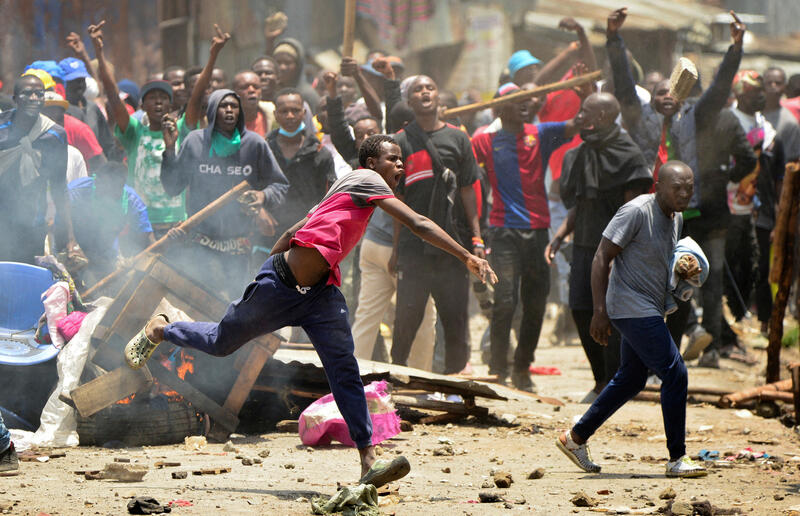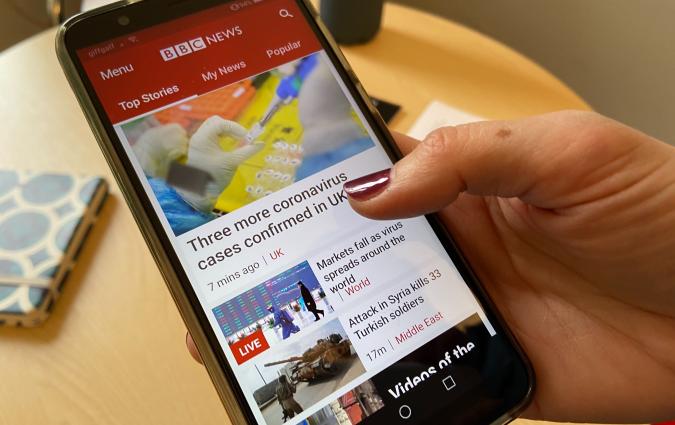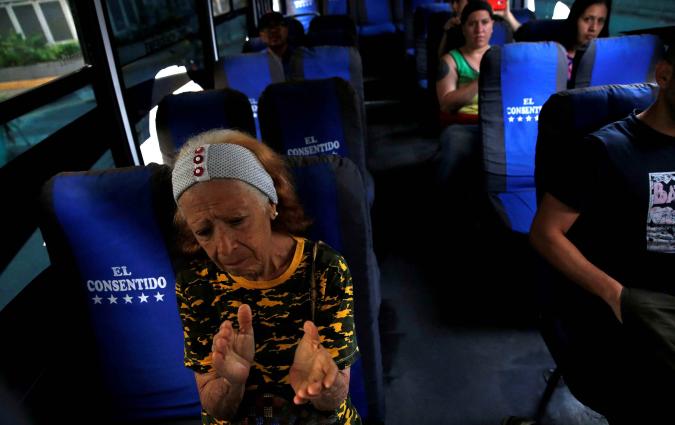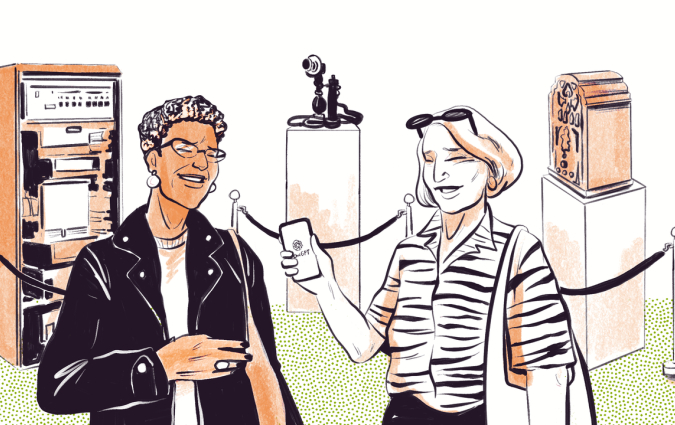Journalists punched, kicked and tear-gassed: inside ‘the darkest month for Kenyan media’

Supporters of Kenya's opposition leader Raila Odinga throw stones at riot police officers in Nairobi in March 2023. REUTERS/John Muchucha
In March 2023, Kenya’s opposition leader Raila Odinga called for demonstrations to protest the high cost of living and alleged fraud in the 2022 elections. At the time, no one anticipated that these protests would expose journalists to so many attacks from both citizens and police officers.
This piece provides an account of what happened at the peak of these attacks, a time the Media Council of Kenya has called "the darkest month for Kenyan media since the clamour for multiparty democracy" in the early 1990s. The article explains the factors behind this violence and some of the actions perpetuating it in a country where press freedom is going through a dangerous decline.
Tear gas against reporters
In late March, Eric Isinta, a passionate camera person at TV channel NTV, left his office to cover the protests in Nairobi. A few hours later, he was on a hospital bed. He was with four other camera operators atop a vehicle live-streaming the protests, when the opposition leader's motorcade was blocked by police vehicles with water cannons.
The police started spraying water and shooting tear gas in their direction. “I had never witnessed police use such an amount of gas before. They were targeting us,” Isinta says. With over eight years of experience at NTV, he had already covered numerous protests before, but never experienced something like this.
Isinta was hit on the chest by a tear gas canister. He was wearing a bulletproof vest for safety. But he struggled to pull out the canister fast and throw it out before it exploded. As a result, he suffered burns on his hands and stomach.
“The gas exploded as I was throwing it and my colleagues had to jump from the vehicle because it exploded right where we were,” he says. “I turned to pick up my camera. That's when a second canister hit me on the right side of my cheek, and I went black. I later found myself on the ground having fallen from the top of that vehicle.”
Even though both Isinta and another journalist needed medical attention, the battles between protesters and the police made it hard to get it. Fellow journalists took them to a nearby hospital where they received first aid before being transferred to a larger hospital for specialised care. “The canister broke my jaw and wounded my right eye," Isinta says.
Footage filmed by an Africa Uncensored journalist suggests the attack against Isinta and his colleagues was a targeted one. A plain-clothes police officer is seen walking towards the vehicle, shattering its window, firing tear gas inside, and then walking away. A few moments later, another officer in a gas mask is seen opening the doors to check if anyone is inside.
This was not the first time camera operators had been targeted by police in Kenya. In the previous week, the police also used water cannons to spray five camera operators who were sitting atop a vehicle.
According to Isinta, the water made them itch severely due to suspected chemicals used to deter protesters and damaged their equipment, cumulatively valued at around $22,000. They were about 40 metres away from the water cannon and the police could see their media-branded vests. They waved at the police, but their pleas were ignored.
Despite these losses, Isinta kept live-streaming with an app on his phone.
A significant drop in press freedom
Attacks against journalists have greatly impacted Kenya’s press freedom. According to the 2023 Press Freedom Index by Reporters Without Borders, Kenya ranks position 116 out of 180, a significant drop from the position 69 recorded in 2022.
Addressing the issue of attacks on journalists during demonstrations requires swift action from all relevant stakeholders. According to Patience Nyange, Executive Director Association of Media Women in Kenya (AMWIK), there's a need for the government and the public to respect the work journalists do. She explains that Kenyan laws promise journalists the freedom to do their work in a safe environment that is free from intimidation, harassment, and any form of threat.
"We stand for an open, free democratic society that respects the rule of law and the freedom of expression and opinion. For us that is not negotiable," she says.
Nyange thinks that some of the attacks occurred because certain media organisations were perceived to have a particular political leaning. “I don't think anyone left their houses saying I'm going to hammer journalists, but when they got there, they were like, okay, there's a journalist from this media house that we know is aligned with the other side. So, they attacked them,” she says.
Africa Uncensored’s Calvin Rock had never covered a protest before, and his first assignment left him petrified. Rock and one of his colleagues were covering the protest in one of Nairobi's informal settlements when they were arrested under police custody for almost an hour. Both were interviewing residents about a shooting incident in the area when police officers approached them.
“A few people had gathered around us, so the police came and dispersed them,” Rock says. “Then a senior officer ordered her juniors to arrest us. They asked us to turn off the camera and took us to a police vehicle.” The reason given by officers for the arrest was that the journalists had been assembling a crowd. The police drove with them around for an hour and released them.
Nyange says news organisations should train their reporters once a year on how to act in these kinds of situations. "Journalists should know how to report in hostile environments," she says.
There were many other incidents against journalists during the protests. One of those incidents involved Citizen TV reporters who were attacked by a knife-wielding gang in one of Nairobi's informal settlements. Some of those journalists were beaten and robbed, and their vehicle damaged.
Another Daily Nation Crime reporter, Steve Otieno, was assaulted by a gang of looters armed with machetes who had raided a farm owned by the family of former president Uhuru Kenyatta. Otieno had gone to report on the incident when a group of about 10 looters accosted him, pushed him to the ground, punched him, and hit him several times on the head with a machete handle. They tore his clothes and stole his mobile phone. He sustained injuries on his head, his neck and one of his ears.
In the same evening, another NTV camera team who had gone to the farm to capture the looting was also attacked by the gang, who stoned their vehicle and shattered a window injuring two people.
The darkest month
At least six journalists were seriously injured during the protests. According to the Media Council of Kenya (MCK) CEO David Omwoyo, the attacks were unwarranted, a gross violation of human rights, and an impediment to the country's democracy and press freedom.
Through a statement from MCK, Omwoyo said that they had documented 25 cases of attacks on local and foreign journalists covering the protests by state security officers and members of the public.
“March 2023 remains the darkest month for Kenyan media since the clamour for multiparty democracy,” says Omwoyo. “Camerapersons and photographers have been targeted by the perpetrators of acts of hooliganism and criminality whose interest is to destroy any evidence of their acts captured on camera.”
When the protests started journalists were not targeted by citizens. But the attacks intensified after the Directorate of Criminal Investigations (DCI) circulated photographs of some of possible suspects. Most of those photographs had been taken by journalists, and this resulted in much more hostility against any reporters covering the demonstrations.
Sila Kiplagat, a photojournalist who covered the protests for the Daily Nation, took some of the most iconic photographs of both the police and the protesters. He believes that the police’s post had a direct impact on how reporters were targeted. “It created animosity between the journalists and the protesters,” he says. “If it was truly for investigation purposes, why post these pictures instead of looking for the individuals through your own sources?”
In a shocking twist of events, the police found themselves in an embarrassing situation. Some of the photographs they had shared falsely claimed to be recent while others were not even taken in Kenya. According to fact-checks by various journalists, some of the photographs were from the 2018 protests, others from the 2017 and 2022 elections protests while others were from neighbouring Burundi's 2015 election protest.
After the fact-checks came out, the DCI issued an apology and blamed the mistake on the 'overwhelming information' received from the public.
Women journalists were not spared from the attacks. NTV journalist Ngina Kirori was confronted by a police officer while she was covering the protests in Nairobi. The officer ordered her to stop recording with her phone, damaged her press card and grabbed her phone. Then he deleted a video she had recorded and ordered her to leave, but she refused and continued to do her job.
Winnie Chepkemoi, a reporter for the Daily Nation in Kericho, Western Kenya also sustained injuries after being attacked by people who had barricaded a road. Protesters punched her, kicked her, pulled her hair, and damaged her phone.
Even though some of these cases were documented, there is no record of any arrests of perpetrators. “All the perpetrators need to be brought to justice,” Nyange says.
Threats from politicians
In a surprising move by the government, the Communications Authority of Kenya (CA) threatened to revoke the licences and broadcast frequencies of six television stations. Through a statement, the authority claimed that the media covering the demonstrations generated panic and jeopardised peace.
“The Authority has established that at least Six TV stations (Citizen TV, NTV Kenya, K24 TV, KBC, TV47 and Ebru TV) provided coverage in a manner that violated the Programming Code,” says the statement. “Failure to adhere to the outlined obligations shall be acting in breach of licence conditions, which shall attract liability under relevant provisions of the law, including revocation of broadcast licence and/or broadcast frequencies.”
The statement was condemned by journalists and civil society organisations, which saw it as an attempt to prevent the media from covering the protests. The Kenyan High Court also issued orders preventing the Authority from carrying on the threat to revoke the licences of the six broadcasters.
Politicians from both the ruling coalition and the opposition openly issued threats against the news media. The ruling party’s Majority Leader in the Senate accused the media of being a ‘cartel’ that needs to be ‘crushed’. Meanwhile, the Majority Leader of the ruling party in the National Assembly concurred with his comments.
The opposition leader also accused The Star Newspaper of being biassed and urged his supporters to boycott the daily. He later rescinded that order and filed a complaint with the Media Council of Kenya.
The media's role
The media has also received legitimate criticism for how they covered the demonstrations. According to Wanja Maina, who works in the communication space, the media did a disservice to Kenyans for not doing in-depth reporting about the issues behind the protests.
“News organisations have often pitted two people opposing each other. It might be good for viewership, but it doesn’t help the audience because whoever is articulate carries the day even if they’re spewing lies,” Maina says.
Nyange, the Executive Director of the Association of Media Women in Kenya, says that journalists did their best to cover the protests and points out the real problem might have been the language used by the opposition. “There was no consistent messaging,” she says.
The media plays a critical role in Kenya's democracy and reporting on protests is essential. “There should be clear safety protocols in place before journalists are sent out for assignments in hostile environments,” says Nyange. “As a journalist, keep in mind that no story is worth your life. You have a family that loves you and people that depend on you. So pull out before situations escalate.”
In every email we send you'll find original reporting, evidence-based insights, online seminars and readings curated from 100s of sources - all in 5 minutes.
- Twice a week
- More than 20,000 people receive it
- Unsubscribe any time







